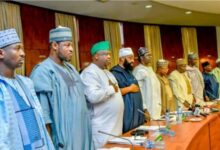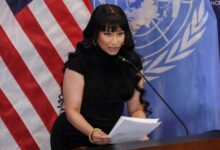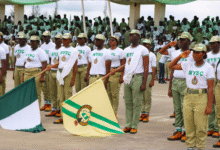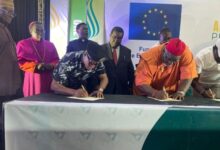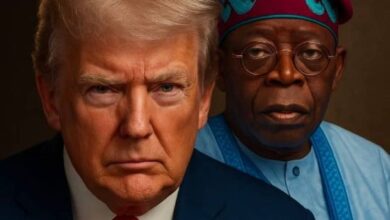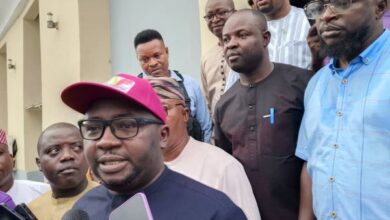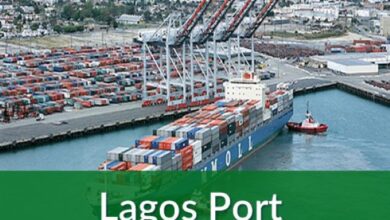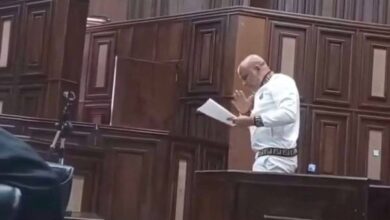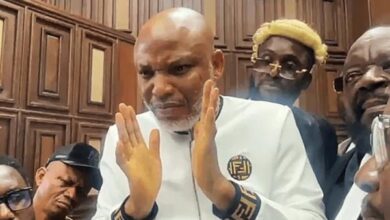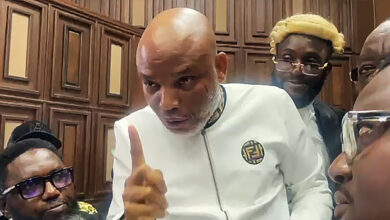19 Key Milestones In The Life of Robert Mugabe
 Following the death of former Zimbabwe’s leader, Robert Mugabe, below are 19 key milestones in his political trajectory.
Following the death of former Zimbabwe’s leader, Robert Mugabe, below are 19 key milestones in his political trajectory.
1924 – Mugabe was born on February 21 in what was then British-ruled Southern Rhodesia.
1940s-1950s – He was educated at Catholic schools and attends South Africa’s University of Fort Hare.
He taught in Zambia and Ghana, where he was influenced by African independence movement leaders.
1960s – Mugabe campaigned for Zimbabwe’s independence and was imprisoned in 1964 for political agitation.
While incarcerated, he earned two law degrees from the University of London External Programme.
1974 – Released from prison, he escaped to Mozambique where Zimbabwe African National Union guerrilla fighters elected him to lead their struggle against white minority rule. A number of rivals died in suspicious circumstances, rights groups say.
1980 – Mugabe’s ZANU-PF party won independent Zimbabwe’s first election. He took his oath of office as prime minister on April 18.
1982 – Mugabe deployed North Korean-trained troops to crush an insurgency by former guerrillas loyal to his liberation war rival Joshua Nkomo.
Government forces were accused of being involved in the killing of 20,000 civilians, which Mugabe denied.
1987 – He became President with sweeping executive powers. After changing the constitution, he signed a unity pact with Nkomo, who became one of his two deputies.
READ ALSO: Zimbabwe Ex-president, Robert Mugabe dies at 95
1990 – ZANU-PF and Mugabe won parliamentary and presidential elections.
1998 – An economic crisis marked by high interest rates and inflation sparked riots in Zimbabwe.
2000 – Zimbabweans rejected a new constitution in a referendum, Mugabe’s first defeat at the ballot box.
Thousands of independence war veterans and their allies, backed by the government, seized white-owned farms, saying the land was illegally appropriated by white settlers.
2001 – The United States put a financial freeze on Mugabe’s government in response to land seizures, beginning a wave of Western sanctions.
Mugabe’s relationship with the West, especially the US and Britain, never recovered.
2002 – Mugabe won a disputed presidential vote, which observers condemned as flawed.
Zimbabwe was suspended from the British Commonwealth over accusations of human rights abuses and economic mismanagement. Mugabe pulled his country from the grouping the following year.
2008 – Hyperinflation reached 500 billion per cent, the nadir of an economic implosion that forces millions of people to leave the country, many to neighbouring South Africa.
– Mugabe lost a presidential vote but won the run-off after opponent Morgan Tsvangirai withdrew, citing violence against his supporters by security forces and war veterans. A power-sharing agreement was later signed.
2010 – Media reports said Mugabe was seriously ill with cancer, speculation that continued in following years.
2013 – Mugabe won another disputed presidential vote though Western observers cited multiple accounts of electoral fraud.
2016 – Protesters led by a pastor staged the biggest show of defiance against Mugabe in a decade, prompting speculation about life after the veteran leader.
2017 – Mugabe was forced to resign in November following an army coup and was replaced by Emmerson Mnangagwa, the man he had fired as his deputy two weeks earlier.
2018 – Mugabe was seen in public for the first time since leaving power. He berated his former ZANU-PF allies and backed opposition leader, Nelson Chamisa on the eve of an election.
2019 – Mugabe traveled several times to Singapore to seek medical treatment as pictures of the gaunt, gray-haired former leader circulate on social media.
Zimbabwe strongman Mugabe dead at 95. More here: https://t.co/gQhZ3XNoZR pic.twitter.com/yUaHg1uJU6
— Reuters (@Reuters) September 6, 2019
Samson Oyedeyi


